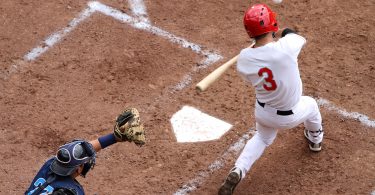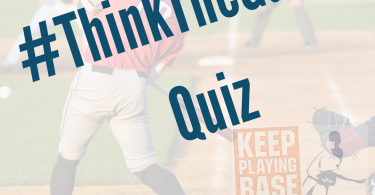In this week’s installment on improved catch-play, we turn our attention to the defensive generals—catchers. Much of what we suggested for the infielders is relevant for catchers, and if you are serious about developing a better catch routine, check out the article on infielders. In this post, we will go into more detail on what you need to improve your skills as a catcher.
Quick transfer
The speed of a catcher’s transfer is half the battle to the coveted two-second pop time. Much like infielders, catchers should be using active feet and working on transferring the ball into their throwing hand. This does not mean quick catch; it means working on quick hands at a normal catch-play pace.
When you are bringing it back in from long toss, take a few throws from your catcher’s stance and work your transfer and footwork simultaneously. When doing this, make a few quick transfer throws (catcher’s quick toss).
Work hard on getting a 4-seam grip quickly
In addition to working on a quick transfer, it is equally important to transfer the ball to a 4-seam grip. The 4-seam grip with proper backspin will create a straight throw. If you transfer the ball quickly but into a 2-seam grip, it will be incredibly hard to make an accurate throw, no matter how quick you are. Just remember that a quarter turn of the ball from any poor grip will get you to a proper 4-seam grip.
Not too many posed throws
While some people like to break catchers’ throwing motion down into stages, be careful not to overemphasize one pose to the point where it takes over your muscle memory. Make sure you are focusing on taking the ball out of your glove and throwing in a fluid motion, as you would in a game.
Focus on maintaining good balance and strong footing with your back foot
Much of a catcher’s throwing skill relies on strong positioning and balance with the back foot. The ability to get a good push off of the right foot is a skill that can take stress off of the arm and be developed through practice.
Making game specific throws
As with all defensive positions, practicing throws from body positions you will find yourself in during games is a great way to get experience before being in a game. Simulate blocking a ball and then make a throw. Snap throws to 1st and 3rd base and throwing down are great things to work on when playing catch. Remember, you don’t have to make max-effort throws to be working on things and getting better!
Accuracy, accuracy, accuracy
Speed and accuracy are the name of the game. Without one, the other is essentially useless. While working on quickness and effectiveness of the transfer, fine focus your target. When throwing from distances approximating the distance from home to second, work on throwing to the left side of your partner (to simulate the left side of second base).
Again, reading the infield catch routine article may prove incredibly helpful for catchers, who (like infielders) need to focus on quickness, efficiency, and accuracy. Good luck, there is a lot to work on!







